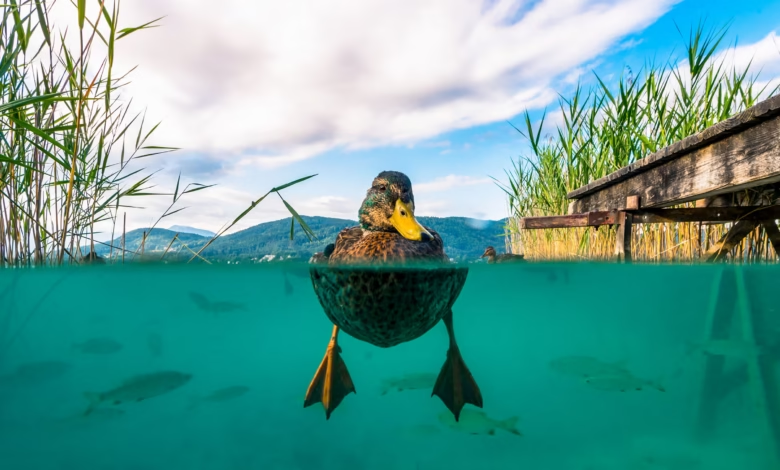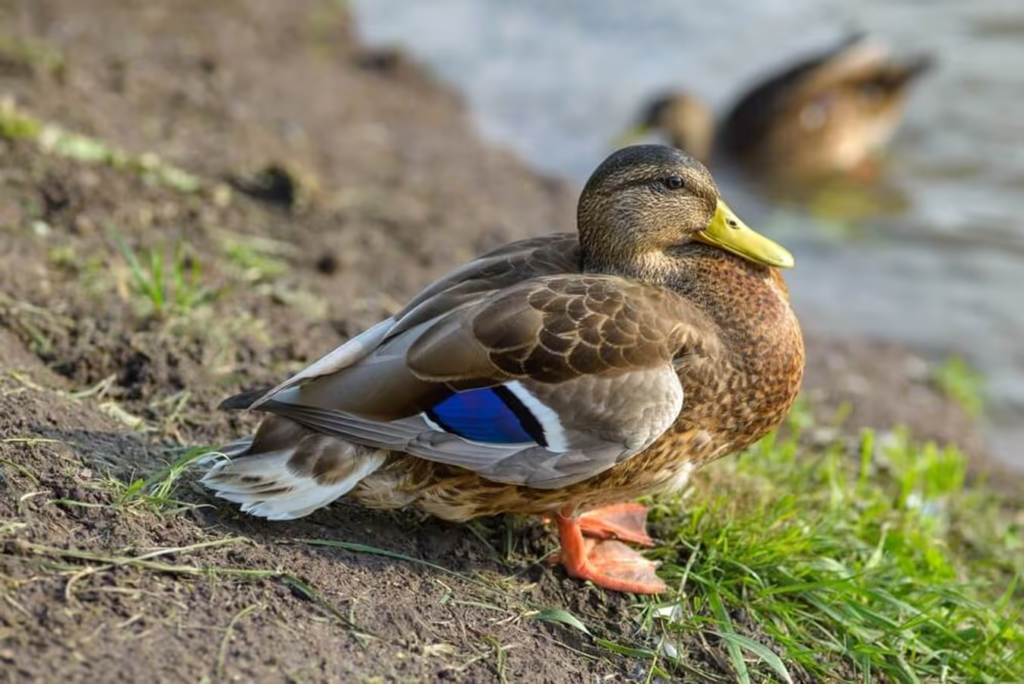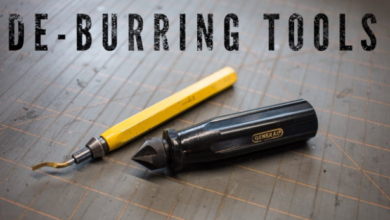How are webbed feet useful to water birds? Discover Their Amazing Benefits

how are webbed feet useful to water birds? You might have noticed that ducks, swans, and other water birds have feet that look different from most land birds. These feet are special! Webbed feet help water birds move around easily in water, making them perfect for swimming, diving, and even walking on wet surfaces. Without webbed feet, these birds would struggle to get around in their watery homes.
Webbed feet act like paddles, giving water birds the ability to glide smoothly through the water. This makes it easier for them to find food, escape from predators, and travel long distances across lakes, rivers, and oceans. But webbed feet aren’t just for swimming. In this post, we will explore how webbed feet are useful to water birds in many exciting ways!
How Are Webbed Feet Useful to Water Birds in Swimming?
Webbed feet are very important to water birds when it comes to swimming. When a bird has webbed feet, they can move easily in the water, just like paddles. The webbing between their toes helps them push the water, which makes swimming much faster and easier. This is very helpful because water birds need to travel through water to find food and escape from danger.
Without webbed feet, water birds would struggle to swim. Their feet wouldn’t have enough surface area to push against the water, making it harder for them to glide or swim smoothly. Webbed feet give them extra power, helping them to swim faster and more efficiently.
Water birds like ducks and geese are great examples of animals that rely on webbed feet to move in water. They can swim across lakes, rivers, and ponds without getting tired easily. So, webbed feet play a huge role in helping them live their lives in the water.

The Science Behind Webbed Feet: Why Water Birds Need Them
Webbed feet are not just a random feature; they are specially designed for water birds to live in their watery homes. The webbing between their toes creates a larger surface area, which helps them push against the water and move more easily. This special design makes them very efficient at swimming and diving, which is important for finding food and escaping predators.
When you look closely at the feet of water birds, you’ll see that the webbing is soft and flexible. This allows the birds to stretch their toes out when swimming and squeeze them back together when walking on land. This flexibility helps water birds adapt to both wet and dry environments.
In addition to making swimming easier, webbed feet help water birds move better when walking on soft or muddy ground. They can spread their toes out to distribute their weight, preventing them from sinking into the mud. So, webbed feet are useful in many ways, both in and out of the water.
How Do Webbed Feet Help Water Birds Move Fast in Water?
One of the most important benefits of webbed feet for water birds is the ability to move fast in water. When birds swim, they need to use their feet to push the water backward, which helps them move forward. With webbed feet, the bird can create a larger push, which helps them swim quickly.
Water birds like ducks can glide through the water with almost no effort. Their webbed feet act like oars, giving them the power to move fast and smoothly. The extra surface area between their toes allows them to move through water much faster than if they had regular feet.
By using their webbed feet, water birds can avoid predators, catch fish, and travel from one place to another without getting too tired. The faster they can swim, the safer they are from danger. It’s easy to see why webbed feet are so important for these birds.
How Are Webbed Feet Useful to Water Birds for Diving?
Webbed feet help water birds dive into the water and swim below the surface. Birds like ducks, swans, and penguins dive for food, such as fish or plants that grow underwater. When they dive, their webbed feet act like paddles, pushing them deeper into the water.
The webbing helps birds push off the water and swim in any direction they want. When diving, water birds need to use their feet to move through the water quickly and easily. The webbed feet give them the power to go deeper and stay underwater for longer.
For example, ducks use their webbed feet to dive under the water to find food. Without webbed feet, they wouldn’t be able to swim as fast or dive as deep. Webbed feet make diving so much easier and help water birds get the food they need to survive.
Webbed Feet and Hunting: How Water Birds Catch Their Food
Water birds like ducks, pelicans, and herons use their webbed feet not just for swimming, but also for hunting. Webbed feet allow these birds to move through the water quickly to catch fish, insects, or plants. Their feet are also useful for moving through muddy or shallow waters where food might be hiding.
For birds like pelicans, their webbed feet help them glide over the water while looking for fish. When they spot something, they can dive or swim quickly, using their feet to push through the water. This makes hunting much more effective because they can reach their food faster.
Water birds also use their webbed feet to stabilize themselves while hunting. Whether they are standing in shallow water or swimming, webbed feet help them keep their balance so they can catch prey without falling or losing control.

How Are Webbed Feet Useful to Water Birds in the Wetlands?
Webbed feet are very helpful for water birds living in wetlands, which are areas with lots of water and mud. In these areas, the ground can be soft, and birds need to be able to walk without sinking. Webbed feet help spread the bird’s weight out, so they don’t sink into the mud. This allows them to move easily and find food in these wet areas.
In the wetlands, water birds can walk across muddy surfaces, search for insects, and catch small fish. Without webbed feet, they would have trouble moving around or even getting to their food. Their special feet make it easier for them to survive in these challenging environments.
Whether they are walking, swimming, or hunting in the wetlands, webbed feet give water birds the ability to live comfortably in these unique habitats.
Do All Water Birds Have Webbed Feet? Exploring the Differences
Not all water birds have webbed feet, but many do. Some birds, like ducks, swans, and geese, have webbed feet that help them swim and move in water. But other birds, like herons and cranes, have different types of feet. Herons, for example, have long toes that help them walk through the mud and catch fish, but their feet aren’t webbed.
The design of a bird’s feet depends on how they live and where they find food. Birds that spend most of their time swimming, like ducks and penguins, are more likely to have webbed feet. On the other hand, birds that stand in shallow water or walk on land may have different types of feet.
So, while webbed feet are useful for many water birds, not all birds need them. It depends on how the bird lives and what it eats.
How Are Webbed Feet Useful to Water Birds in Migrating?
During migration, water birds travel long distances to find better places to live and feed. Webbed feet play an important role in helping these birds get through the water while migrating. When traveling across lakes or rivers, birds with webbed feet can swim quickly and efficiently, saving energy for the long journey ahead.
Migrating birds need to be able to rest, feed, and keep moving. Webbed feet allow them to swim across bodies of water without getting tired. This is very important because they may need to cross large areas of water where there are no land routes.
Without webbed feet, migrating water birds would have a harder time traveling long distances. Their webbed feet help them stay strong and healthy throughout their journey.
Conclusion
webbed feet are very useful to water birds. They help these birds swim, dive, and move easily in the water. Without webbed feet, water birds would have a much harder time finding food or escaping predators. The special design of their feet makes them perfectly suited for life in and around water.
So next time you see a duck or a swan, remember how their webbed feet help them glide through the water. These feet are more than just a cool feature—they are a key part of how water birds survive and thrive. Webbed feet make life in the water easier, faster, and safer for these amazing creatures.




